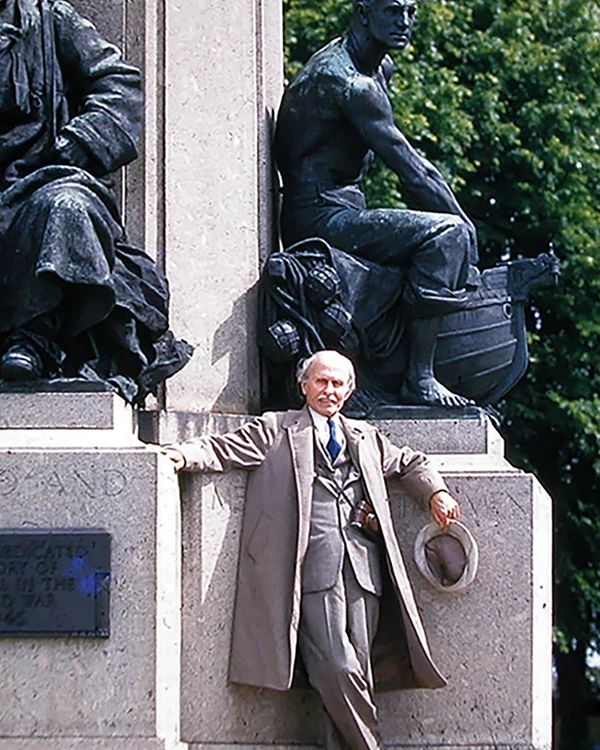Last updated: June 13, 2023
Person
John Angel

"It is probably the best piece of work I have done."
-John Angel about the Francis Vigo Statue
Born in England in 1881, by age 19, he was apprenticed to a wood carver. He attended Exeter School of Art, then Lambeth School of Art, and the Academy School. His two best known works in the United Kingdom include the Exeter War Memorial and the Bridgwater War Memorial. In 1928, John and his family immigrated to the United States.
Throughout the years, his commissions included the six bronze doors of St. Patrick’s Cathedral in New York City; the Founder’s Memorial at Rice University; works at the Cathedral of St. John the Divine, East Liberty Presbyterian Church, Princeton University, St. Paul’s School, Desloge Chapel, and the Francis Vigo Statue at George Rogers Clark National Historical Park.
The Francis Vigo statue at George Rogers Clark was called by the artist John Angel "probably the best piece of work I have done". In 1936, after being delayed for some time, John Angel was able to confirm to the commission that the statue of Francis Vigo would be installed before the dedication. The statue, which was seven feet tall and weighed ten tons, was buried in a box of sand for transport. After it arrived in Vincennes in the early morning of April 29, 1936, it would still take several days for it to be installed. On May 4, the base was positioned and the statue set. Today, it can be viewed along the banks of the Wabash River.
